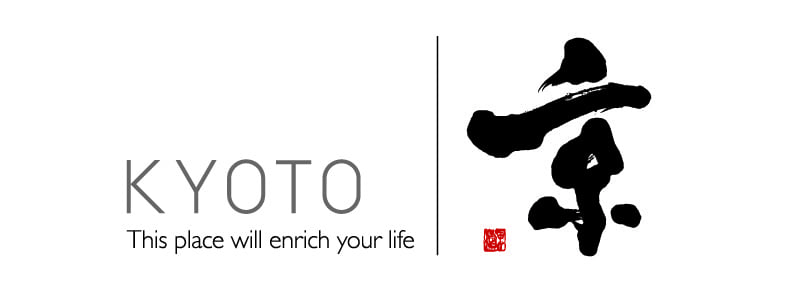Term archive
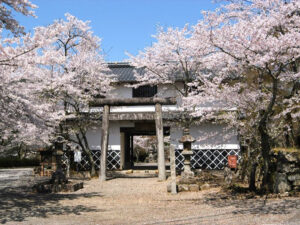
投稿タイプ:sightseeing
Yamaga Castle Park
Yamaga Castle Park in Ayabe City, Kyoto Prefecture, is one of the "200 Best Nature Spots in Kyoto" because you can enjoy the nature of the park year round, with plums and cherry blossoms in spring, fresh greenery in summer, and autumn leaves in autumn. The park holds the "Sakura Festival" on Sundays in early April every year, where you can hear Yamaga drums being played, buy local specialties, and try to catch fresh rice cakes or "mochi" in the "mochimaki" ritual where mochi is tossed out over the gathered crowd. In addition, the autumn leaves are beautiful in mid-November adding color to the garden and the restored castle gate.
The park is not only a great place to enjoy nature, but to learn about history. Yamaga Castle was the home of the Waku family, a great family during the Edo period but it was attacked by Akechi Mitsuhide. After the castle fell, a camp was set up by Moritomo Tani, who was ordered by Hideyoshi Toyotomi to be the lord of the Yamaga domain. The site of the camp is now maintained as a park and the second floor of the restored castle gate holds a Yamaga Museum and has materials related to the Tani Clan including armor and ancient documents. What’s more, on the north side of the park are the remains of the castle moat.
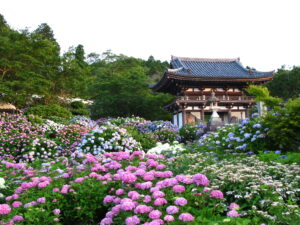
投稿タイプ:sightseeing
Tanshu Kannon-ji Temple
Located in Fukuchiyama, Tanshu Kannon-ji Temple was founded in 720 by the Indian monk Hodo. In 961 the monk Kuya built the seven temple buildings (a formation known as shichido garan), and it became the center of worship of the bodhisattva Kannon in the Tamba area, reaching a peak in the Kamakura period (1192-1333). Today there are around 3,600 pieces of historical writings and teachings in the temple, which are designated cultural properties of Kyoto Prefecture.
Tanshu Kannon-ji Temple's eleven-faced Kannon statue is famous for healing, and granting good fortune and road safety. In the temple gardens, there are cherry blossoms in the beginning of April, hydrangea in June, colorful leaves in late autumn and wintersweets from January to February, filling the temple with different colors throughout the year. Tanshu-Kannonji Temple is also known as the Hydrangea Temple, and from June to July there are over 10,000 hydrangea flowers of 100 types blossoming in white, blue, purple and pink. On the 4th Sunday in June every year there is also a Hydrangea Festival, which is held with a series of events including the Buddhist preaching of the monks, and attracts many people each year.
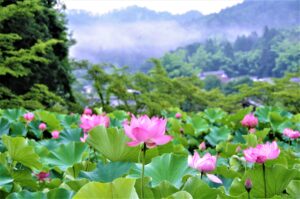
投稿タイプ:sightseeing
Gokuraku-ji Temple
Situated in Kyoto Prefecture’s Ayabe City, Gokuraku-ji Temple was said to have been founded in 1479. The temple belongs to the Rinzai sect, one of the five Zen sects of China, the head of whose branch is Tofuku-ji Temple. Gokuraku-ji Temple is famous for the ancient oga lotuses which bloom every summer. In 1952, their seeds were found in the remains of prehistorical Yayoi era (300 BC - 250 AD) items in Chiba Prefecture by the botanist Dr. Oga. The following year, the lotus seed sprouted and continued on to successfully bloom. It was therefore named the oga lotus in memory of the late Dr. Oga. Gokuraku-ji Temple received several seeds from Chiba Prefecture and every year the lotuses bloom beautifully.
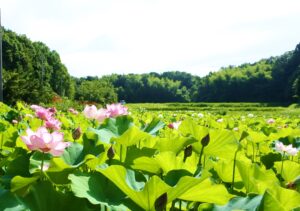
投稿タイプ:sightseeing
Ryogon-ji Temple
Ryogon-ji Temple, in Ayabe City, Kyoto Prefecture, is famous for the thousands of azaleas that bloom in the spring, and lotuses in the summer. In fact, Ryogon-ji Temple is the second of the 25 Most Famous Flower Temples of Western Japan. The temple grounds are also home to a 400 year-old camellia, a 500 year-old bo tree, and a 400 year-old crape myrtle, all of them ranked in the Top Hundred Ancient Trees of Ayabe. The sliding paper doors within Ryogon-ji Temple are patterend with crows in all four seasons, painted by the unique painter Ikka Nagai, famous for crow motifs. These patterns earned the temple the nickname Temple of Crows. (Visitors wishing to see the crows on the sliding paper doors must make a reservation prior to visiting.)
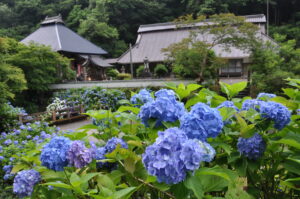
投稿タイプ:sightseeing
Horyu-ji Toko-in Temple
Horyu-ji Toko-in Temple, situated in Kyoto Prefecture’s Ayabe City, was built in 673 by the ascetic Rishu Sennin. A temple of the Koyasan Shingonshu branch, Horyu-ji Toko-in enshrines Yakushi Nyorai (Bhaisajyaguru), which is the buddha of healing and medicine. In its prime, it even had a Shichido garan (the seven halls composing the ideal Buddhist temple compound) construction. However, the temple has seen its ups and downs after several large fires and disasters.
Every year, in time with the peach season, the temple holds the Hina Festival, otherwise known as the Doll’s Festival or the Daughters’ Festival. 12 giant doll stands decorated with 500 Hina dolls, the same as those used in the Meiji era (1868-1912), can be seen at the temple during this time.
In early June, 2,500 hydrangeas bloom across the temple grounds, painting them with color. At the same time, the temple holds a Furin (wind chime) Festival, decorating the square before the main shrine with 750 wind chimes that make soothing music in the wind.
A matchmaker monk by the name of Chisokuin Mukaku, who introduced the famous samurai Sakamoto Ryoma to his wife, was one of the temple's believers. His writing was carved in stone at the temple, and has now become a spot for believers to pray for good matchmaking.
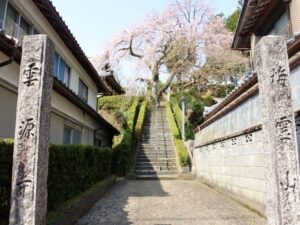
投稿タイプ:sightseeing
Ungen-ji Temple
Situated in Kyoto Prefecture's Ayabe City, Ungen-ji Temple is thought to have been built in the Muromachi era (1336 - 1573) by the head monk of nearby Ankoku-ji Temple.
At the top of the stone steps leading to the temple entrance stands a beautiful weeping cherry blossom tree. Thought to be over 100 years old, it was selected as one of the 100 famous trees of Ayabe City.
The cherry blossom tree is said to have been taken from a branch at Ankoku-ji Temple (a larger temple with a 600-year-old cherry blossom tree), a temple that has connections to Ashikaga Takauji (the first shogun of the Muromachi era). Continuing up the stone steps past the Kannon Hall, there is a stunning view of the magnificent weeping cherry blossom and the mountains in the distance.
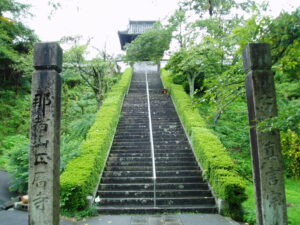
投稿タイプ:sightseeing
Shoreki-ji Temple
Located in Ayabe City next to the Yura-gawa River, Shoreki-ji Temple was built in the year 942. The temple enshrines a statue of the bodhisattva Kannon carved by the temple’s founder, Kuya, a famous priest in the Heian era (794-1185). The statue can only be seen by the public every 33 years. Some of the temple's other treasures include a Thousand-Armed Kannon statue (a designated cultural property of Ayabe City) and a nirvana painting (an Important Cultural Property).
The dry rock garden, which was built in the middle of the Edo period (1603-1868), is a designated scenic spot in Kyoto Prefecture. There are annually flowering plants such as azaleas and bushclover that color the garden throughout the seasons, as well as many ancient trees, including a zelkova tree selected as one of the ten famous trees of Ayabe City.
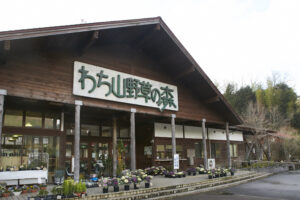
投稿タイプ:sightseeing
Wachi Wildflower Forest
This park makes use of the natural environment as-is across its area of 12 hectares. There are 900 differents types of plants, trees, and fruit trees growing in Wachi Wildflower Forest, making for some dramatic changes in appearance throughout the four seasons, and for many flowers to enjoy.
Wachi Wildflower Forest also offers a variety of experiential options, including 15 wildflower exhibitions a year, woodworking crafts, moss ball-making, flower-planting, and more. It's a wonderful place to take in the changing seasonal scenery of the wild plants and flowers.
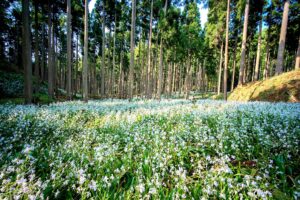
投稿タイプ:sightseeing
Fringed Iris & Oriental Paperbush Meadow
Oitomi is a town in Ayabe City in the north of Kyoto Prefecture, where there's a forest with dense fields of oriental paperbush (mitsumata) and fringed iris (shaga, Iris Japonica) flowers. These fields were discovered in 2015 by a photographer, and are a rare and beautiful sight. From the end of March to mid-April a sea of oriental paperbush flowers bloom and cover about 1.5 hectares of land. Oriental paperbush is a deciduous shrub that grows 1-2 meters tall, with little scented yellow flowers which are made up of four sepals with no petals, and a fibrous bark that has historically been used as material for washi (Japanese paper) and paper money. From the end of April until mid-May, after the oriental paperbush season, the mysterious-looking, snow white fringed iris bloom and cover the forest floor. In some parts of the forest, there's also a 400 meter-long "corridor of irises." The flowers are short-lived and last just a single day, but every day new flowers bloom to replace them. During the flowering season from the end of March to mid-May, you can also find local goods, tea, coffee, and sweet red bean-based soup at the Hanayadori rest area, which is open on Wednesdays, Fridays, Saturdays, Sundays, and holidays from 10:00 a.m. to 3:00 p.m.. While you don't need to hike to see the flowers, the forest is not paved please make your visit in shoes you don't mind dirtying.

投稿タイプ:sightseeing
Yakuno Highland
The Yakuno Highland, located in Yakuno-cho, Fukuchiyama City in the northwest of Kyoto Prefecture, is a highland area created by a volcanic eruption of the prefecture's sole volcano, Mt. Takura (Mt. Takara).
The Yakuno district is located on the border with Hyogo Prefecture, surrounded by nature and mountains of some 700 meters in height.
In spring, many people come to see the weeping cherry trees at the Kyoto Prefectural Tree Planting Center, commonly known as the "weeping cherry of Yakuno-cho."
Once the cherry blossom season has ended, Shirai Omachi Wisteria Park in neighboring Asaku City, Hyogo Prefecture sees a bloom of wisteria the greatest of its size in the mountains here. In summer, the Yakuno area becomes a retreat from the heat, and in autumn the leaves are a colorful sight. With its beautiful natual scenery throughout the four seasons, the Yakuno area is visited by many throughout the year.
At Nosho-no-sato Yakuno Roadside Station in particular, visitors can enjoy some of the best of Woodland Kyoto with its hot springs, overnight accommodation, activities, dining, and shopping.
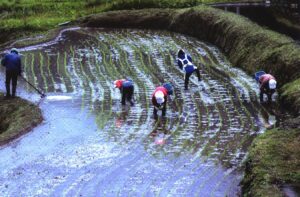
投稿タイプ:sightseeing
Kewara District
In the Kewara District in Oe-cho, Fukuchiyama City, a large number of rice paddies of various sizes spread irregularly across the steep slope of this mountainous region. These are known as terraced rice fields ("tanada"), and the gentle curves drawn by the rice paddies as they follow the slope of the hillside, and the beautiful meandering lines of the farm roads together make for quite a lovely sight to behold. Visitors can enjoy the sights of the different seasons here in Japan, with the water-filled rice paddies reflecting the blue of the sky and the white of the clouds above during planting season, and the rice stalks shining golden during harvest season. The landscape here reflects the scenery of legends and history in the Japanese countryside.
Since 1997, the Kewara District has held activities aimed at preserving the rice terraces, like the Rice Terrace Farming Tour. In July 1999, the terraces here were selected as one of the "100 Best Rice Terraces in Japan" by the Ministry of Agriculture, Forestry and Fisheries. In recent years, the locals have introduced a rice terrace ownership system, in order to make use of non-farming land. A walking path has also been installed, and a water mill has been restored, which, together with some flowers, has added some playfulness to the scenery here.
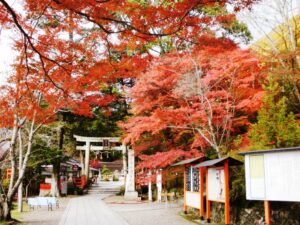
投稿タイプ:sightseeing
Izumo Dai-jingu Shrine
Izumo Dai-jingu Shrine was the most important shrine in what was once known as Tamba Province. Princess Mihotsu is the deity enshrined here, and because she was sent by the sun goddess Amaterasu to be the bride of the god Okuninushi, she has become famous as a god of matchmaking. The main shrine building is said to have been built by Ashikaga Takauji (the first shogun of the Ashikaga shogunate), and it is an Important Cultural Property. The Izumo Furyu Hana-odori dances, held annually on April 18th, are said to be Shinto rituals to bring rain, and they see an elaborate display of traditional flower hats, noble clothing from ages past, and white tabi socks on the dancers as they move to drum beats.
